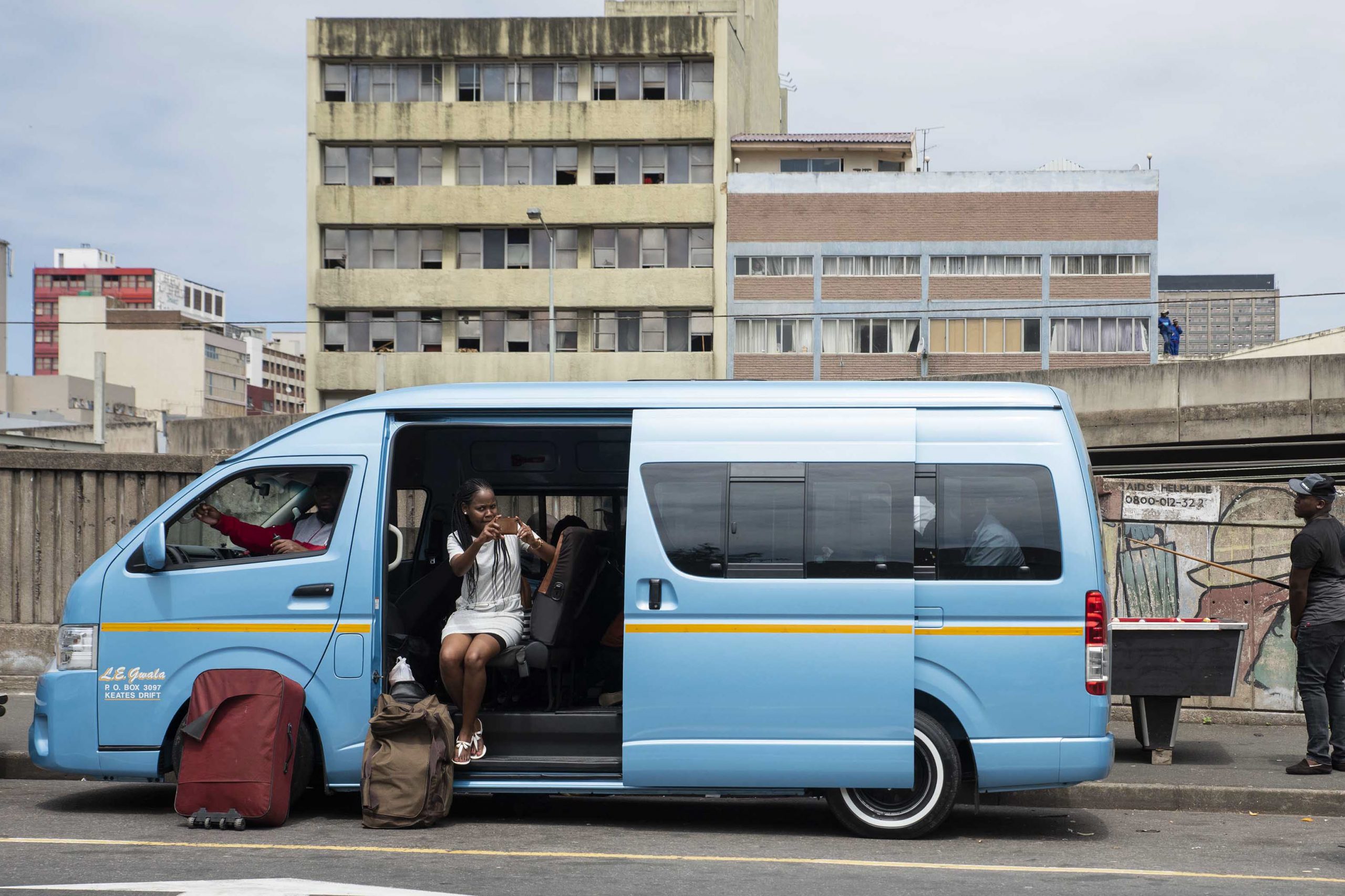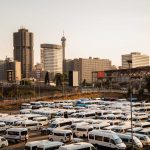Public transport inequality
The Competition Commission’s market inquiry reveals that South Africa’s public transport system remains skewed by class, to the advantage of middle and high-income earners.
Author:
25 February 2020

South Africa’s public transport sector is subsidised in a way that benefits middle-class and urban metro commuters at the expense of working-class commuters and those travelling in rural or peri-urban areas.
This was the major takeaway from one of two provisional reports drafted by the Competition Commission’s market inquiry into land-based public transport.
The first report dealt with the general public transport market, which includes buses, trains and minibuses. The second dealt with the metered taxis and e-hailing public transport market.
Speaking at the launch of the two provisional reports, Competition Commissioner Tembinkosi Bonakele pointed out that while two-thirds of South Africa’s commuters rely on minibus taxis to commute, these commuters are only benefitting from 1% of the money government allocates to public transport.
By contrast, commuters who travel via rail and bus – which make up a third of the country’s commuters – benefit from the other 99% of the subsidies.
Related article:
The provisional report called for the “devolution” of Metro Rail and the Gautrain, arguing the walls that existed between these two services need to be “broken down”.
Bonakele said the heavily subsidised Gautrain was effectively a train for the middle class, and this decision was a “huge mistake”. “You can’t subsidise the middle class in a country like this,” he said. “People use the Gautrain because of the convenience and safety. The working class [would] also love that.”
The provisional report points out that safety is a major factor for commuters and often trumps efficiency or price. Bonakele argued that because South Africans spend “a significantly high proportion of disposable income” on public transport it was a priority sector for the commission.
The global benchmark for how much a person from a developing country should spend on public transport is 10% of a commuter’s income. In South Africa’s metros, this figure sits as high as 50.4%, while in the country’s rural areas the figure is just over 20%.
Skewed subsidies
Bonakele said what is “striking” about South Africa’s public transport system is the critical role played by minibus taxis. “They are the core of the public transport system,” he said.
The report suggests that the minibus taxi industry is worth between R60 billion and R90 billion and estimates that the industry has 150 000 minibus taxi owners operating an estimated 200 000 to 250 000 minibus taxis in the country.
The minibus taxi industry also employs 300 000 drivers, 100 000 rank marshals, 100 000 car washers and 150 000 street sellers at taxi ranks.
Minibus taxis service 66.5% of South African households, transporting around 15 million people daily, while buses transport 23.6% and rail just 9.9%.
Related article:
Bonakele said the split between minibus taxis, buses and rail highlights the complexities that come with government subsidising public transport, because the current subsidy system is not linked to user numbers.
The provisional report says there is currently “a skewed relationship between ridership levels and subsidy funding”.
Bonakele was quick to point out the inequality of this system, arguing that the rail network is limited in many provinces, and this means that pumping 40% of subsidies into rail means the government is largely subsidising Cape Town and Johannesburg commuters.
“You have to address a commuter in Mthatha the same way you address a commuter in Cape Town,” said Bonakele. “There must be equity there.”
No subsidy policy, no integration
The democratic government largely took over the apartheid subsidy framework with some adjustments. Government currently does not have a subsidy policy, which allows some modes of transport to be subsidised over others.
Despite the subsidies of rail and bus public transport, commuters still prefer the unsubsidised minibus taxis, the report states, because they are more efficient, particularly over shorter routes.
“Despite some of the concerns by commuters, the minibus taxi industry is the preferred mode of transport by the majority of the commuters due to its reliability and easy access to commuters,” reads the report.
The minibus taxi industry’s “top concern” is that subsidies skew competition in favour of buses and rail, creating distortions in the market.
“We are not saying that resolving this matter is going to be easy,” said Bonakele. “But one has to be sympathetic to the minibus taxi drivers. They can’t compete against these distortions.”
The provisional report states the current subsidy system for buses “prevents competition” between commuter bus operators and serves as an “artificial barrier to entry” for small bus operators.
Related article:
“The extension of the current subsidy contracts in perpetuity has had [the] unintended consequence of creating de facto monopolies on subsidised routes,” states the report. “Government should consider breaking some of the contracts into smaller contracts in order to create opportunities for new entrants and smaller bus operators.”
Bonakele said South Africa’s public transport system is “highly fragmented”, and that there is a “minimum” of coordination. “Public transport is a system,” he said. “The issue is whether the subsidy promotes the system.”
The provisional report says the National Land Transport Act of 2009 outlines an integrated system with shared ticketing and infrastructure to ensure travel is done in a “seamless manner”. A decade after the Act was passed, however, this integrated system remains a pipe dream.
“The commission did not find any evidence of integration among various modes of transport except for Gautrain buses, which are coordinated with the timetables of Gautrain,” reads the report.
Metered taxis vs e-hailing
The second provisional report from the Competition Commission’s market inquiry dealt with the market serviced by metered taxis and e-hailing services Uber and Bolt.
The factional relationship between the types of taxi service has exploded into violence over the last few years, with murdered drivers and torched cars. This conflict is analysed in the report, which finds that the current regulatory system is stacked against metered taxi drivers. The central conflict between metered taxi and e-hailing operators is the former’s view that the latter have “bypassed regulatory scrutiny”.
The commission points out that this conflict has “heightened safety concerns for passengers and operators”, with certain areas deemed no-go zones for e-hailing operators.
The report argues that the “growing popularity of e-hailing services” has caught regulatory authorities off guard, as e-hailing services “do not fall under the conventional regulatory framework”. At the same time, the introduction of e-hailing services has “disrupted” the business model of metered taxis.
Related article:
“Unlike in other countries, South Africa’s metered taxis do not roam the streets searching for passengers,” reads the report. “A passenger has to place a booking with a taxi company via telephone or go to the taxi rank to get a ride.”
Taxi ranks for metered taxis are provided at airports, shopping malls and hotels. These services are most often used by middle- to high-income earners and tourists.
Once a metered taxi has dropped off a customer, the driver can’t just pick up a new customer. The taxi has to return to the rank to do so, meaning the return journey supplies no income.
“In sharp contrast to metered taxis, the e-hailing application enables the hailing of a vehicle electronically,” reads the report. “Drivers on an e-hailing platform can roam and hail everywhere and prices are determined in accordance with demand and supply.”
Uneven playing field
The report argues that because of regulations related to municipal boundaries and area restrictions, the e-hailing services shouldn’t be allowed to roam to pick up customers, but their use of an app makes the violation of the licence conditions difficult to monitor.
“This violation of licence conditions by cutting across municipal boundaries has been a source of conflict leading the metered taxis to conclude that the regulatory environment is uneven, which ultimately impacts on competition,” reads the report.
The commission argues that a lack of “enforcement” of these conditions results in an “uneven playing field between metered taxis and e-hailing services”. Most countries are moving away from imposing area restrictions on metered taxis, and it recommends the complete removal of these regulations as they reduce competition.
Related article:
The report also states that the corporate tax and VAT being paid by e-hailing companies was disproportionately low compared to the revenue they generated in South Africa. It did, however, point out that new tax and VAT laws were implemented in April 2019. These should make Uber and Bolt pay their fair share of VAT in the jurisdiction in which they operate.
The report also raised concerns about the labour practices of e-hailing services. “Evidence presented to the commission highlighted that the relationship between e-hailing companies and its operators is not governed by labour laws,” reads the report. “The commission received submissions alleging that e-hailing companies take unilateral decisions with no input from drivers, an action which has the potential of undermining the rights of the drivers and threatening their survival.” The commission heard allegations that e-hailing services used incentives to attract drivers when they launched that were later withdrawn.
The deadline for all comments on the provisional reports is 31 March 2020.





